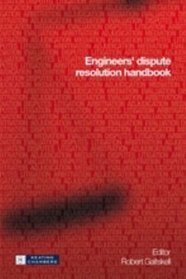Search -
Engineer's Dispute Resolution Handbook
Engineer's Dispute Resolution Handbook
"I am delighted to commend this handbook to anyone embarking on dispute resolution" - Professor John Uff, CBE, Q C. "No book on dispute resolution addresses such a wide range of subjects" - Ian Luke, Managing Director, Skanska Cementations. This handbook provides up-to-date information on the various forms of dispute resolution which have recent... more »
"I am delighted to commend this handbook to anyone embarking on dispute resolution" - Professor John Uff, CBE, Q C. "No book on dispute resolution addresses such a wide range of subjects" - Ian Luke, Managing Director, Skanska Cementations. This handbook provides up-to-date information on the various forms of dispute resolution which have recent... more »
ISBN-13: 9780727734501
ISBN-10: 0727734504
Publication Date: 8/24/2006
Pages: 157
Rating: ?
ISBN-10: 0727734504
Publication Date: 8/24/2006
Pages: 157
Rating: ?
0 stars, based on 0 rating
Publisher: Thomas Telford Services Ltd
Book Type: Hardcover
Members Wishing: 0
Reviews: Amazon | Write a Review
Book Type: Hardcover
Members Wishing: 0
Reviews: Amazon | Write a Review
Genres:
- Science & Math >> General
- Engineering & Transportation >> Architecture >> Project Planning & Management
- Petroleum, Mining & Geological >> Offshore Drilling
- Civil >> General
- Civil >> Construction >> Management
- Civil >> Construction >> Contracting




